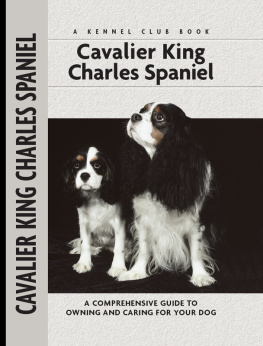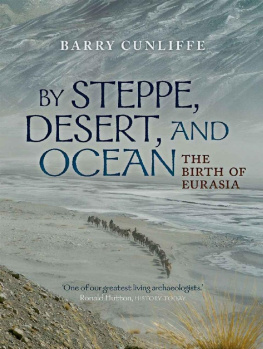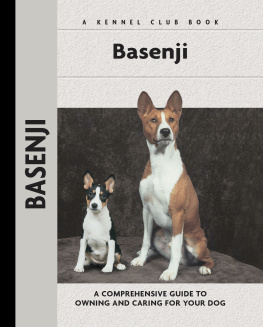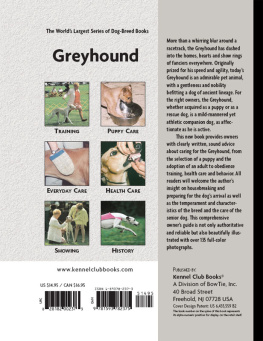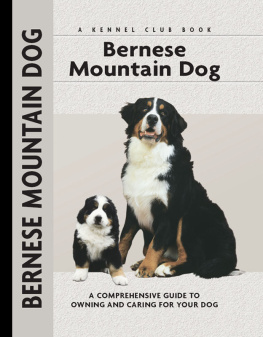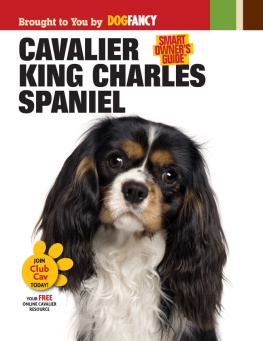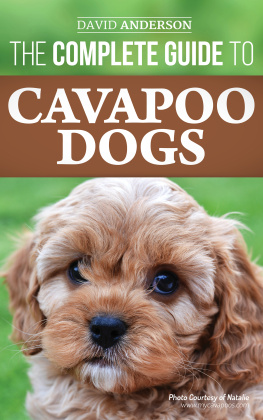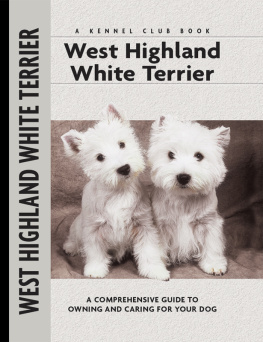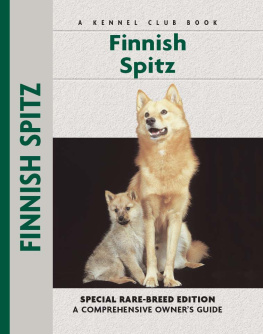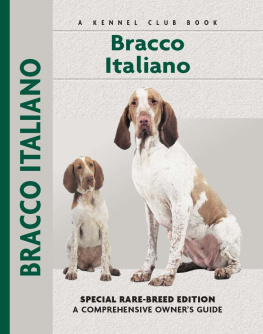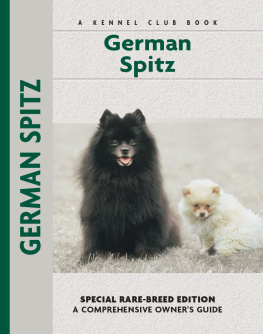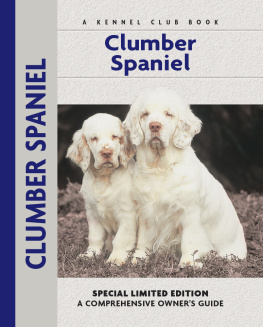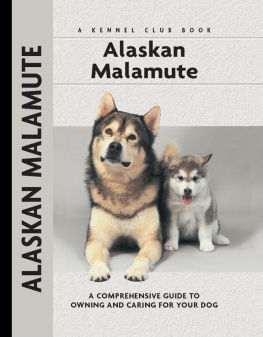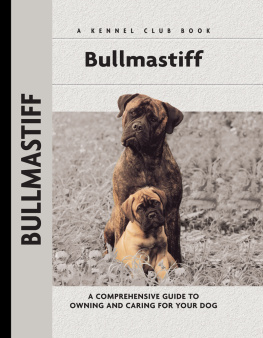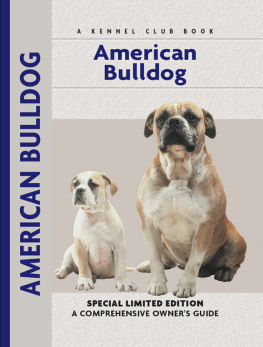Photographs by Carol Ann Johnson
Additional photos provided by: Norvia Behling, David Dalton, Doskocil, Isabelle
Francais, Mikki Pet Products, and Karen Taylor.
Illustrations by Rene Low.

Posing for a portrait must be counted among the Cavalier King Charles Spaniels natural abilities. These lovely dogs have sat for many famous painters (and photographers!).

The charming Cavalier King Charles Spaniel can trace his ancestors back to the small toy spaniels that are found in many paintings of the 16th, 17th and 18th centuries. Such dogs were favorites of royalty and nobles of the day and because of this many were depicted with their owners and with children, making for some delightful family groups. The first portrait in England that depicts the breed is one of Queen Mary I with her husband, Philip of Spain, accompanied by a pair of small spaniels lying at their feet. It was painted in 1554 by Antonio Moro. Well-respected artists such as Titian, Van Dyck, Stubbs, Gainsborough and Reynolds all showed similar small dogs with flat heads, high-set ears and slightly pointed noses.
The devotion of the Cavalier is legendary as it was a little black and white toy spaniel that hid beneath the skirts of Mary Queen of Scots at her execution in 1587. Even after her death, it would not leave its dead mistress for it was recorded, Then one of the executioners, pulling off her garters, espied her little dogg which was crept under her clothes which could not be gotten forth but by force, yet afterwards would not depart from the dead corpse, but came and lay between her head and her shoulders

Sir Edwin Landseer was the artist of choice for Queen Victoria and Prince Albert, for whom he painted a series of portraits depicting court life at Windsor. From 1845, this famous Landseer painting is entitled Cavaliers Pets.
During Tudor times (14851603) these small spaniels were highly popular as ladies pets and under the House of Stuart (16031714) they were actually given the name King Charles Spaniels. King Charles I was accompanied by a small spaniel when he was a fugitive at Carisbrook Castle. After he had been executed, his dog, Rogue, was paraded around the city by a Roundhead, though the fate of the little dog is not known. But it was really thanks to King Charles II that the breed took its name.
A great lover of these dogs, Charles II was almost always seen with some of his small canine friends at his heels. The famous diarist Samuel Pepys made many references to them, showing dismay that the King played all the while with his dogs rather than minding business affairs. The King even decreed that these spaniels were to be allowed in any public place, including the Houses of Parliament.
James II was another king reputed to be fond of the breed, and there is record of him giving orders during a bad sea storm that the men were to save the dogs! and the Duke of Monmouth! One can only wonder if there was any significance in his mentioning the dogs before the Duke! Undoubtedly spaniels of this kind were much in favor in many of the European courts, but although the red and white variety bred at Blenheim Palace retained its popularity, the others seemed to go somewhat out of fashion. This was thanks largely to the accession to the throne of William and Mary, who highly favored Pugs.

SPANISH ORIGINS
Some people believe that all spaniels originated in Spain and that they actually took their name from the word espagol, which means Spanish. It is also believed that the black Truffle Dog may lie behind black and tan colored Cavaliers.
The merry toy spaniels that had scampered about the palaces and had appeared on numerous state occasions were, it might be said, demoted by the House of Orange. The Pugs smugly took their place. Some believe that it was because of the newfound popularity of the Pug that some enthusiasts of King Charles Spaniels decided that a certain change in the breeds features would perhaps be an improvement.
During the early years of the 19th century, the small spaniel once again rose in the popularity stakes for the Duke of Marlborough used small spaniels as shooting companions. These were a little larger than the Cavaliers known today. In 1820 his dogs were described as very small or carpet spaniels. They were red and white, with very long ears, short noses and black eyes. Still today, what is known as the lozenge spot on the head of some Cavalier King Charles Spaniels is highly prized, and there is a delightful story as to how this came about. The Duchess of Marlborough had one of these spaniels as a much-loved pet which kept her company while her husband was away at war. At anxious times she had the habit of pressing her thumb on her dogs head while awaiting news of her husband. When the bitch produced a litter of puppies the head of each was marked with her thumbprint.

The ever-popular red and white Cavalier, called the Blenheim, received its name from the Blenheim Palace where the dogs were bred.
Hitherto these spaniels had been brown and white, black and white or tricolor. In the past there were black spaniels but they were known as Gredin, although they were very much like todays black and tans, with tan eyebrows, muzzles, throats and legs, known as fire-marks. It was not until the reign of Queen Victoria that ruby-colored spaniels appeared. In her youth, Queen Victoria owned a small spaniel called Dash, a tricolor. So fond was she of Dash that after her Coronation in 1838 she was said to have rushed home to give her dog his usual bath. Dash was a familiar little figure and appeared on many pieces of needlework sewn by Victorian women. The first known painting of a ruby is one in which the Duke and Duchess of Cumberland were pictured walking with such a dog. A gentleman by the name of Mr. Risum is reputed to have owned the first known ruby and this won second prize at the Alexandra Palace Show in 1875.

Once known as Gredin, the black Cavalier of yesterday much resembles the variety we know as Black and Tan.

MALTESE FOUNDER
Although the true origin of todays Cavalier is not really known, the breed may originally have developed from a red and white spaniel of Malta or Italy, this having been crossed in the 13th century with a type of spaniel from the Far East.
Undoubtedly in the early years both size and type varied within the breed, so it may be surmized that at that time breeding was carried out in something of a haphazard way. However, as the 19th century moved on in Britain, dog showing was starting to become a popular pastime and the breed saw a new fashion emerge. Soon enough the so-called old type had begun to disappear: the longer nosed, flat-headed dogs having been replaced by a much shorter faced, dome-headed dog now known as the King Charles Spaniel. In the US, the breed became known as the English Toy Spaniel. It was believed that the Pug may have been used in breeding programs in order to help bring about this significant change. In 1886 the Toy Spaniel Club was founded, but in 1902 the organization changed its name to the King Charles Spaniel Club, even though initially the English Kennel Club was opposed to this change of name. Once again royal interest worked in favor of the breed and Edward VII intervened, subsequent to which the new name was approved.
Next page
